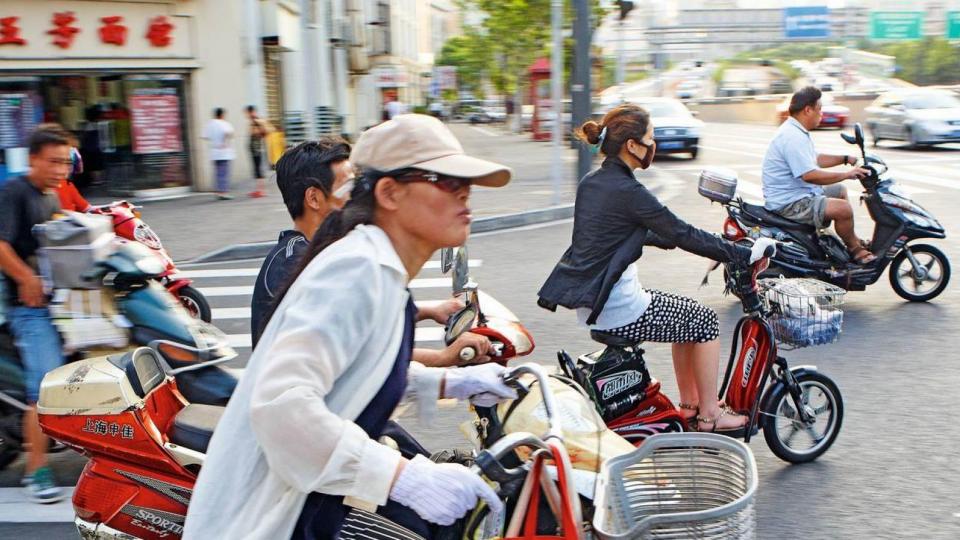Healthy China 2030: Valuing innovative cancer medicines in China’s legal framework

- Health at Bayer
-
Pharmaceuticals
- Treatment Areas
- Innovation & Technologies
- Cell and Gene Therapy
-
Sustainability
- Patient Access Charter
- Leadership Perspective
- Strengthening Healthcare Access
- Moving Non-Communicable Diseases Care Forward
- Ensuring a Sustainable Product Supply
- Delivering Better Cancer Care
-
Empowering Women, Globally
- Boosting Family Planning Usage through Digital Channels
- Capacity building: Addressing Root Causes through Partnerships
- Impact at Scale: The Challenge Initiative
- Promoting Awareness: World Contraception Day (WCD) & the Your Life Campaign
- Providing Accessible and Affordable Contraceptives
- Enabling Family Planning in Humanitarian Settings
- Fighting Neglected Tropical Diseases
- Transparency
- News & Stories
- Personal Health
- Report a Side Effect
- Medical Counterfeits
Since last year, the Chinese government has issued several announcements that enforce the protection of intellectual property (IP). One such announcement included introducing a pilot for patent term extension (PTE), establishing a functioning regulatory data protection system, and designing a patent linkage system.
Promoting IP protection and accelerating regulatory approval
Additionally, the Chinese government implemented a series of measures to accelerate the review and approval of innovative drugs, as well as improving lifecycle supervision (monitoring the drug after it has been marketed and available for patient use).
According to new legislation, innovative cancer drugs that are urgently needed by patients could benefit from a priority approval channel called priority review. One example saw a new cancer immunotherapy drug take just six months from time of national drug approval (NDA) submission to final approval1. This is remarkable and even exceeds the reform’s new recommended average approval time for innovative or essential drugs of 2-3 years2. Before the reform, approval often took 7-8 years including clinical trial application (CTA) and NDA review3.
Moreover, the recognition of foreign clinical data is being simplified. According to the guidance “Acceptance of Overseas Clinical Trial Data”, overseas data can be accepted under certain conditions for orphan diseases or life- threatening illnesses and pediatric illnesses without effective treatment. This is the case, if the pharmaceutical companies 1) already conducted clinical trials and received approval for the treatment in the EU, US or Japan, and, 2) if they can demonstrate that racial or ethnic differentials would not affect the drug’s efficacy and safety. There are 48 innovative drugs that could benefit from this measure according to the draft policy released in August 20184. This foreign data recognition and quick review also contributes to a more simultaneous drug development and assessment as well as launch across multiple countries, including China.
Broadening financial coverage for cancer care
Finally, the Chinese government is keen to improve the reimbursement situation in the country. Although China has established a broad coverage, 17.7 percent of patients still spend more than 10 percent of their income on health care5. Patients with serious medical conditions such as cancer often have to shoulder a heavy economic burden. To achieve health equity and improve this situation, the government has, thus far, taken two steps:
-
First, they have increased overall financial subsidy for medical insurance of urban and rural residents. An extra 40 RMB has been added per capita, raising the government subsidy from 450 RMB to 490 RMB per person. Half of this 40 RMB will be allocated to the treatment of serious diseases6.
-
Secondly, the government has shortened the review cycle of the NDRL. This is the second update to the NDRL in the space of a year, both of which included cancer treatment listings. After update in 2017, where about half of the 36 newly listed drugs were cancer drugs7, on October 10 2018, the government included a further 17 cancer drugs on the NRDL. According to a first analysis, 10 are relatively new drugs including innovative medicines that just reached the Chinese market in 2017 or 20188. They provide options for patients suffering from lung cancer, leukemia, colorectal cancer, melanoma, and renal cell carcinoma.
However, this seems to be just the start. In the future, the NMSB plans to update the NRDL frequently and streamline drug price negotiation mechanisms. Last but not least, the Chinese government is encouraging commercial insurances to play a role in covering financing gaps that, until now, are not covered by public insurance. The new institutional set-up of the health authorities is sure to help boost financial coverage.
Overall, the Chinese government proves to be highly ambitious in its efforts to tackle the cancer burden. In the language of the United Nations sustainable development goals: the Chinese government shows that its commitment to treating non-communicable diseases such as cancer through prevention and therapy is an integral part of its goal of Universal Healthcare Coverage.
This article was co-written by Verena Kantel and Qing Lv. Verena Kantel, Head Pharma Health Policy International at Bayer, is also China-Speaker of the German Healthcare Partnership (GHP). She is a trained lawyer and before joining Bayer, she worked on foreign trade law and politics for the BDI, the Federation of German Industries. Qing Lv is a healthcare policy researcher at Bayer Liaison Office, Greater China. She previously worked for the Chinese Academy of Science for anti-cancer drug development in Beijing.
Sources:
1 Center for Drug Evaluation, CFDA, CDE Procedure Documents, Last accessed October 2018.
2 http://www.ctoutiao.com/625251.html, Last accessed October 2018.
3 Ibid
4 http://www.cde.org.cn/news.do?method=viewInfoCommon&id=314651, Last accessed October 2018.
5 World Health Organization, Universal Health Coverage, Country Data Profile, Last accessed October 2018.
6 http://lianghui.people.com.cn/2018npc/n1/2018/0309/c417507-29859210.html, Last accessed October 2018.
7 Caixin Global, China to Subsidize More Cancer Drugs, Last accessed October 2018.
8 FiercePharma, Novartis, Pfizer, AZ and more hand China 50%-plus cancer drug discounts, Last accessed October 2018.





















